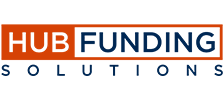Leasing, Purchasing, or Rent-to-Own Equipment for a Small Oil and Gas Business
When starting or growing a small oil and gas business, one of the most important decisions you will make is how to acquire the equipment you need. Three main funding options are leasing, purchasing, and rent-to-own. Each option has its own advantages and disadvantages, and the best choice for you will depend on your specific requirements and circumstances.
Leasing
Leasing is a great option for small businesses that need access to equipment but don’t have the upfront capital to purchase it. Main advantages of leasing include:
Cost savings: Leasing enables you to spread the cost over time through regular payments. This preserves your capital for other essential aspects of your business.
Flexibility: Your industry might exerience fluctuations in demand and market conditions. Leasing provides flexibility by enabling you to adjust your equipment needs according to the changing requirements of your projects. You can easily upgrade or replace leased equipment as technology advances or your operational needs evolve.
Access to state-of-the-art equipment: Leasing enables you to acquire the latest and most advanced equipment without the high initial cost. In your particular sector, technological advancements might significantly impact efficiency. By leasing equipment, you can stay competitive by utilizing cutting-edge tools and machinery.
Maintenance and support: Equipment leasing often includes maintenance and support services. Instead of worrying about repair costs or equipment downtime, the leasing company typically takes care of maintenance, repairs, and replacements. You focus on your core business activities while knowing that the equipment remains in optimal condition.
Reduced risk: Leasing can help mitigate risks associated with equipment ownership. Including other tax advantages, equipment can be subject to rapid depreciation, and owning outdated or obsolete equipment can result in losses. Leasing enables you to transfer the risk of equipment value fluctuations to the lessor.
- Cash flow management: Lease payments are typically structured to match your cash flow, offering predictable monthly expenses. This enables you to plan your budget effectively and allocate resources to other critical areas of your business.
Disadvantages of leasing include:
- Long-term cost: Leasing equipment often results in higher costs over the long term compared to purchasing. While the monthly lease payments might seem manageable, the accumulated costs over the lease term can exceed the equipment’s actual value. Small businesses might end up paying more in the long run without owning the asset at the end of the lease.
- Limited flexibility: Leasing equipment often involves signing a fixed-term contract with specific terms and conditions. This lack of flexibility can be a disadvantage for small businesses that require the freedom to upgrade or modify their equipment as their needs change. Early termination of a lease can also result in penalties and fees, further limiting flexibility.
- No ownership or equity: When leasing, the small business does not own the equipment. This means that they do not build any equity or asset value over time. This can be a drawback for businesses that plan to use the equipment for an extended period or foresee its long-term value. Ownership enables potential resale or trade-in value in the future.
- Limited customization options: Leased equipment often comes with restrictions on customization or modification. This can be problematic if the business needs to adapt the equipment to suit specific requirements or integrate it with existing systems. The leasing company might have strict policies regarding alterations, leaving the business with limited control over customization.
- Higher overall cost in certain scenarios: Depending on the industry and specific circumstances, leasing equipment might end up being more expensive than purchasing in certain cases. If the equipment’s expected lifespan exceeds the lease term, the small business could end up paying more in lease payments than the actual cost of ownership.
Purchasing
Purchasing equipment is a good option for small businesses that have the financial resources to do so. Main advantages of purchasing include:
Increased efficiency: Purchasing equipment for your small business can greatly enhance productivity and efficiency. By investing in the right tools and machinery, you can streamline processes, automate tasks, and reduce manual labor. This enables your employees to work more effectively and accomplish tasks in less time, ultimately boosting overall efficiency.
Cost savings in the long run: While purchasing equipment might require a significant upfront investment, it can lead to long-term cost savings. Owning equipment means you don’t have to rely on renting or leasing, which can be expensive over time. Additionally, owning equipment enables you to control maintenance and repair costs, potentially saving money compared to relying on external service providers.
Quality control: When you purchase equipment, you have the ability to choose high-quality options that meet your specific business needs. This helps ensure that you have control over the quality of the products or services you provide. By maintaining high standards, you can build a reputation for delivering exceptional quality, which can lead to customer loyalty and increased sales.
Competitive advantage: Having the right equipment can give your small business a competitive edge in the market. Up-to-date and efficient equipment can enable you to offer better products or services, deliver faster turnaround times, and meet customer demands more effectively. This advantage can help you attract new customers and retain existing ones, allowing your business to thrive amidst competition.
Scalability and growth: Purchasing equipment with scalability in mind enables your small business to accommodate growth and expansion. If you anticipate an increase in demand or plan to expand your operations, owning equipment gives you the flexibility to scale up your production capacity. It eliminates the need to constantly rely on external resources and enables you to seize opportunities for growth more readily.
Disadvantages of purchasing include:
- High initial costs: Purchasing equipment can be a significant financial burden for small businesses. The upfront cost of buying machinery, tools, or technology can strain their limited budgets and hinder their ability to allocate funds to other critical areas like marketing or hiring.
- Depreciation and obsolescence: Equipment typically loses value over time due to depreciation. Small businesses might find themselves with outdated or obsolete equipment that has little resale value or cannot keep up with changing market demands. Keeping up with technology advancements can be challenging for small businesses with limited resources.
Maintenance and repair expenses: Purchasing equipment also means being responsible for its maintenance and repair costs. Regular maintenance and unexpected repairs can add up and create financial strain for small businesses, especially if they lack the in-house expertise or need to hire external service providers.
- Limited flexibility: Owning equipment can limit a small business’s flexibility to adapt to changing market conditions or scale their operations. If the business experiences a downturn or shifts its focus, it might be stuck with expensive equipment that is no longer needed, resulting in wasted resources and reduced agility.
Capital tied up: When a small business invests a significant portion of its capital in purchasing equipment, it restricts their ability to invest in other areas of the business, such as marketing, research and development, or hiring skilled personnel. This lack of available capital can hinder growth opportunities and limit the business’s overall financial flexibility.
Rent-to-own
Rent-to-own is a hybrid option that combines elements of leasing and purchasing. Main advantages of rent-to-own include:
Cost-effectiveness: Rent-to-own agreements often require lower upfront costs compared to purchasing equipment outright. This enables small businesses to conserve their capital and allocate funds to other critical areas of their operations
- Flexibility: Rent-to-own agreements offer flexibility, allowing businesses to test equipment before committing to a purchase. This is particularly beneficial for businesses that need to help ensure the equipment meets their specific requirements or to evaluate its performance over a trial period.
- Upgrade options: Rent-to-own agreements often include provisions for upgrading to newer or more advanced equipment as technology advances. This enables small businesses to stay up-to-date with the latest technology without incurring significant expenses associated with purchasing new equipment outright.
- Maintenance and support: Rent-to-own agreements might include maintenance and support services provided by the rental company. This can alleviate the burden of repairs, maintenance, and technical support, saving time and resources for the small business.
- Tax benefits: Renting equipment rather than purchasing it can offer tax advantages. The rental costs might be deductible as operating expenses, providing potential tax savings for small businesses.
Disadvantages of purchasing include:
- Higher overall cost: Rent-to-own agreements might have a higher overall cost compared to purchasing the equipment outright. Small businesses might end up paying more in the long run due to interest charges or higher rental rates associated with the rent-to-own arrangement.
- Limited ownership rights: Until the equipment is fully purchased, the small business does not have full ownership rights. This means they cannot make modifications, sell, or dispose of the equipment without violating the terms of the agreement.
- Potential financial risks: If the small business faces financial difficulties or needs to downsize, it might still be obligated to continue rental payments or face penalties for early termination of the rent-to-own agreement. This can place additional financial strain on the business.
- Limited selection: Rent-to-own options might have a more limited selection of equipment compared to outright purchasing. The rental company’s inventory might not include all the specific models or brands that a small business might prefer.
- Dependency on the rental company: Small businesses relying on rent-to-own agreements are dependent on the rental company’s reliability and stability. If the rental company experiences financial issues or goes out of business, it could disrupt the small business’s access to the equipment and support services they rely on.
Final Considerations
In summary, when choosing between leasing, purchasing, or rent-to-own, make sure to consider these factors:
Upfront cost: How much money do you have available to purchase equipment outright?
- Monthly payments: How much can you afford to pay each month?
- Terms: What are the loan/lease terms, including interest rates, that you will generally consider?
- Long-term ownership: Do you want to own the equipment at the end of the term?
- Tax benefits: Can you take advantage of any tax benefits associated with owning equipment?
With these considerations, as a small business owner, you can make an informed decision about the best way to acquire the equipment you need for your small oil and gas business.



